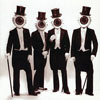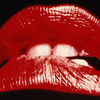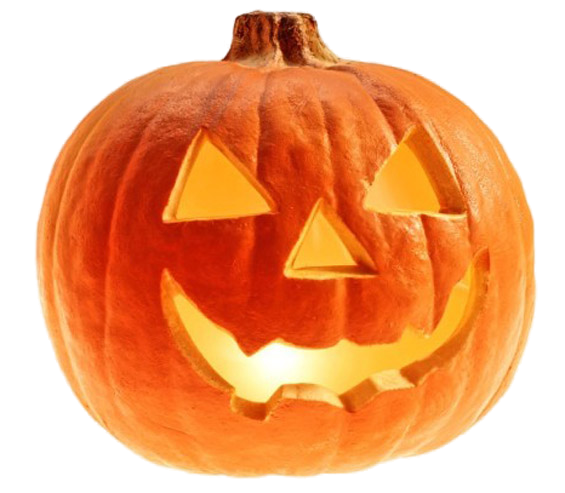Halloween: The Hilarity And Horror Of The Holidays
|
Halloween is the marker of the holiday season. From September sections of stores across the country become a sea of black and orange. Grinning pumpkin faces taunt us from every corner of shelves piled high with cheap plastic and paper tat. Year on year the choices of cheap nasty nonsense we can buy to decorate our homes expands to a dizzying level of utter crazily confusing consumer choice.
And all that's just in stores here in the the UK. We seem to have caught the American Halloween bug. A quirky little night at the end of October has grown from something just for the kids, to a full blown holiday event that starts a whole month before, and has been fully embraced by adults. We now go Trick-or-Treating, a complete American invention we have now appropriated. Grown adults dress-up in costumes they spent weeks planning and searching out on eBay or Amazon. Now don't get me wrong, it's not like we Brits have never done the Halloween thing. Just that now, we do it full-on over-the-top to-the-max American style. |
We Brits will never get anywhere near our transatlantic buddies though when it comes to the insanity of their spending on costumes and decorations for Halloween. The National Retail Federation estimates that Americans will spend a total of $7.4 billion during the Halloween period. $2.8 billion of that will just be spent on costumes. Breaking that down further $1.1 billion of that $2.8 billion will go on children's costumes, and $1.4 billion on adult costumes. And unlike us Brits who still think such things are utterly weird Americans will spend $350 million on costumes for their pets. (And they call us a nation of pets lovers!) The amount of money spent on candy (that's sweets to us Brits) is expected to hit $2.2 billion. By comparison us Brits spend about a tenth of the United States of the horrendous holiday.
Some American homes become mini Halloween theme parks for the freakishly festive season. These are known as "home haunters", Americans who spend months planning and preparing for Halloween. The front yards of millions of suburban homes become shrines to what was originally a festival rooted in the pagan celebrations of the British Isles. However in the UK Halloween has always competed with Bonfire Night (also known as Guy Fawkes Night), which comes only 5 days later. Which itself has pagan undertones, despite its original basis being about the annual commemoration of the historical event of Guy Fawkes, a member of the Gunpowder Plot who was arrested on the 5th of November 1605. Guy Fawkes and his "terrorist cell" attempted to blow-up the British Parliament, and kill the king at the time.(For any Americans reading this, think V For Vendetta (2006) without the referencing to the hacker group Anonymous.) Anyway, I digress. Let's get back to the whole Halloween thing.
The origins of Halloween in America stemmed from the Irish and Scottish immigrants during the 19th century, who brought the festival with them from their mixed Christian and Celtic/pagan roots. The festival was pretty much confined to the immigrant communities during the mid-19th century, and gradually it extended beyond those communities to become a part of mainstream culture by the early part of the 20th century. By the 1950s and 60s, Halloween was a full-blown festival in America. No longer based in any religious adherence to All Hallows Eve, but a fun and tongue-in-cheek secular celebration that marked the start of the holiday season.
Many businesses exploited the America love of the horrific holiday, producing items to sate the desires of people to embrace to mawkish madness. The likes of Ben Cooper manufacturing cheap and cheerful kids costumes, so that anyone and everyone could participate in the new tradition of Trick-or-Treating. A tradition that only goes back to the 1940s. Somewhat curbed by sugar rationing during WWII, it rose to prominence again in 1947 after rationing ended. In 1951, it was featured in the syndicated newspaper comic-strip Peanuts. And firmly set in the psyche of the American public by 1952, when it was featured in the Disney animation short Trick or Treat in 1952. From then on the Halloween holiday season was an integral element of American culture. In 1974, the New York Halloween Parade was established in Greenwich Village. It has become the world's largest Halloween parade, and interestingly America's only night-time parade. It draws huge crowds of on-lookers and participants. It's estimated that anywhere up to and beyond 60,000 people dress-up and partake in the event, with somewhere around 2 million people crowd the streets to watch the spectacle. With an additional TV audience of over 100 million viewers, it just shows that Halloween in well and truly fixed in the hearts and minds of the American people.
Some American homes become mini Halloween theme parks for the freakishly festive season. These are known as "home haunters", Americans who spend months planning and preparing for Halloween. The front yards of millions of suburban homes become shrines to what was originally a festival rooted in the pagan celebrations of the British Isles. However in the UK Halloween has always competed with Bonfire Night (also known as Guy Fawkes Night), which comes only 5 days later. Which itself has pagan undertones, despite its original basis being about the annual commemoration of the historical event of Guy Fawkes, a member of the Gunpowder Plot who was arrested on the 5th of November 1605. Guy Fawkes and his "terrorist cell" attempted to blow-up the British Parliament, and kill the king at the time.(For any Americans reading this, think V For Vendetta (2006) without the referencing to the hacker group Anonymous.) Anyway, I digress. Let's get back to the whole Halloween thing.
The origins of Halloween in America stemmed from the Irish and Scottish immigrants during the 19th century, who brought the festival with them from their mixed Christian and Celtic/pagan roots. The festival was pretty much confined to the immigrant communities during the mid-19th century, and gradually it extended beyond those communities to become a part of mainstream culture by the early part of the 20th century. By the 1950s and 60s, Halloween was a full-blown festival in America. No longer based in any religious adherence to All Hallows Eve, but a fun and tongue-in-cheek secular celebration that marked the start of the holiday season.
Many businesses exploited the America love of the horrific holiday, producing items to sate the desires of people to embrace to mawkish madness. The likes of Ben Cooper manufacturing cheap and cheerful kids costumes, so that anyone and everyone could participate in the new tradition of Trick-or-Treating. A tradition that only goes back to the 1940s. Somewhat curbed by sugar rationing during WWII, it rose to prominence again in 1947 after rationing ended. In 1951, it was featured in the syndicated newspaper comic-strip Peanuts. And firmly set in the psyche of the American public by 1952, when it was featured in the Disney animation short Trick or Treat in 1952. From then on the Halloween holiday season was an integral element of American culture. In 1974, the New York Halloween Parade was established in Greenwich Village. It has become the world's largest Halloween parade, and interestingly America's only night-time parade. It draws huge crowds of on-lookers and participants. It's estimated that anywhere up to and beyond 60,000 people dress-up and partake in the event, with somewhere around 2 million people crowd the streets to watch the spectacle. With an additional TV audience of over 100 million viewers, it just shows that Halloween in well and truly fixed in the hearts and minds of the American people.

Top Ten: Bands That Dress-Up In Weird Costumes - Since the beginning of rock music, costumes have been part of stage shows. But some bands have take it to weird extremes.
|

Top Ten: Horror Of Movie Musicals - A bizarre countdown of some of the worst and the best of weird and way-out movie musicals based on the themes of horror and sci-fi.
|

